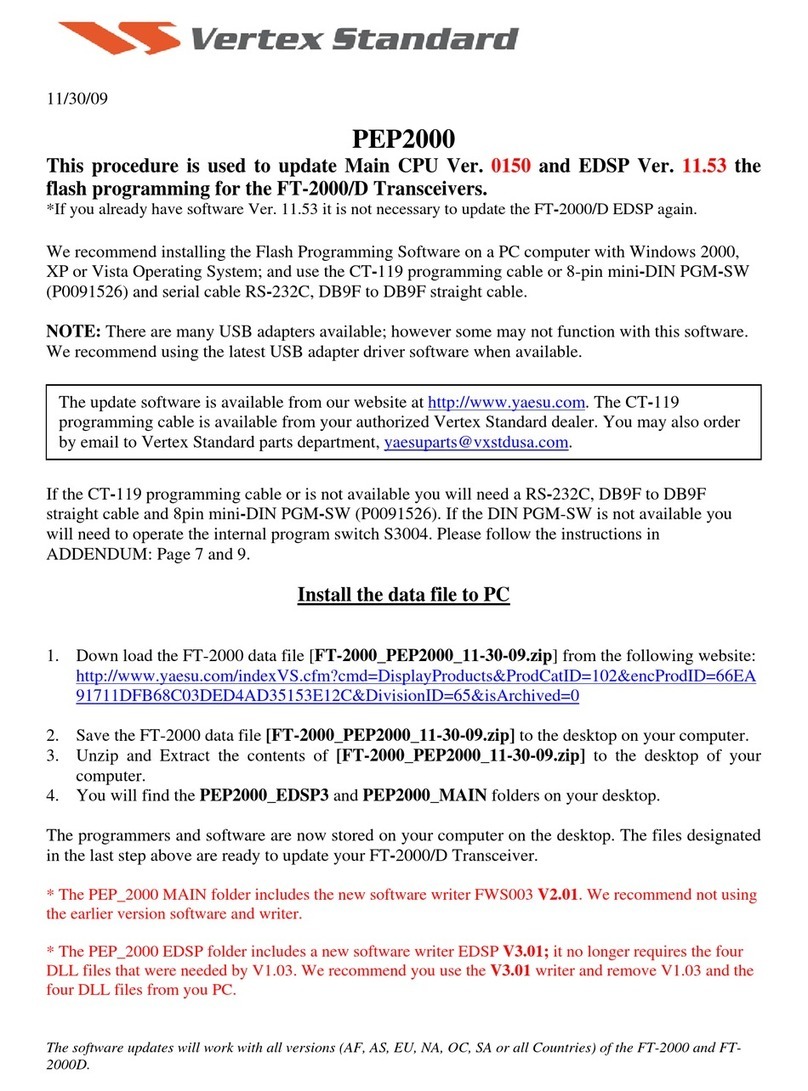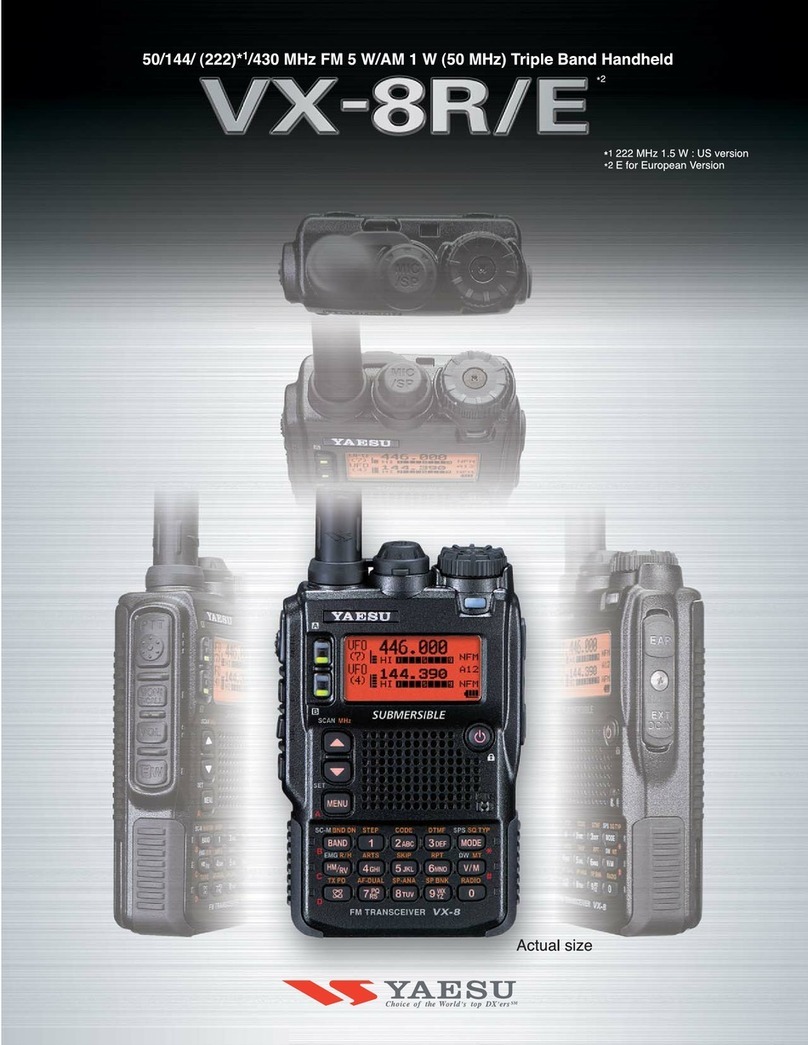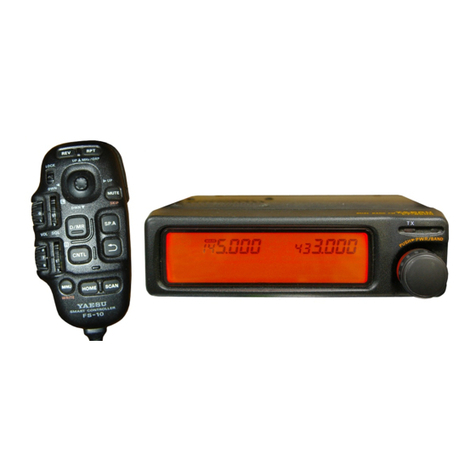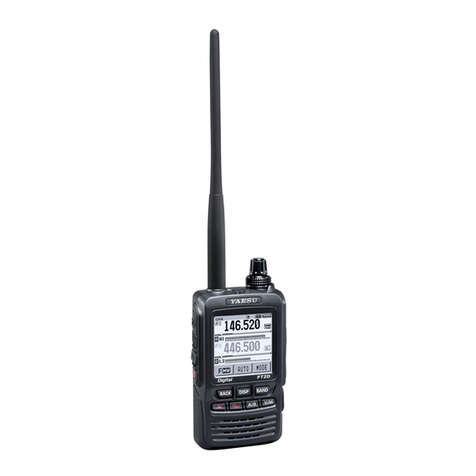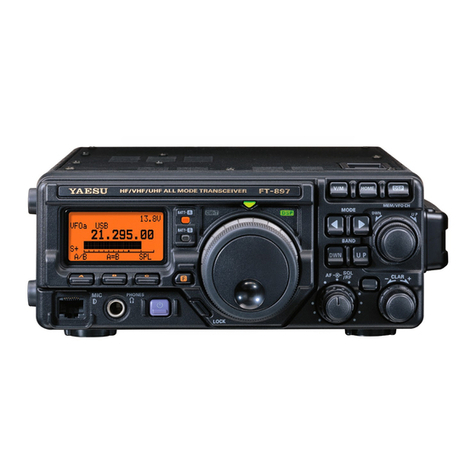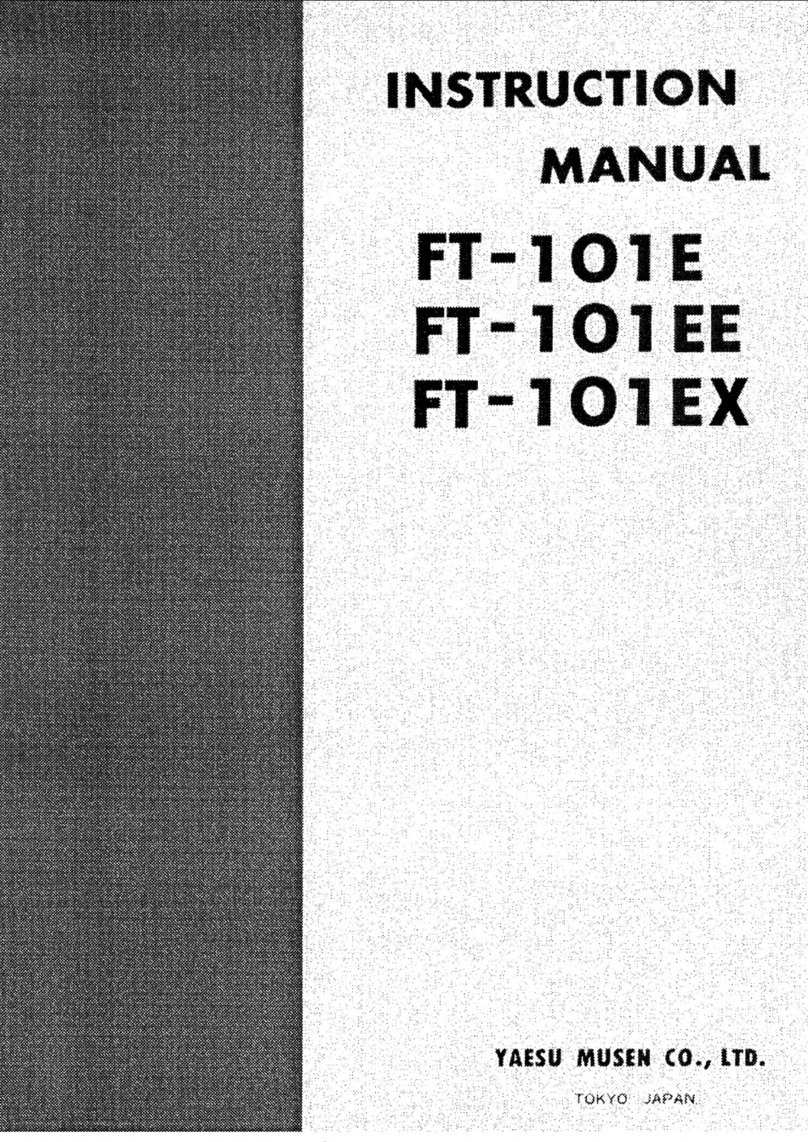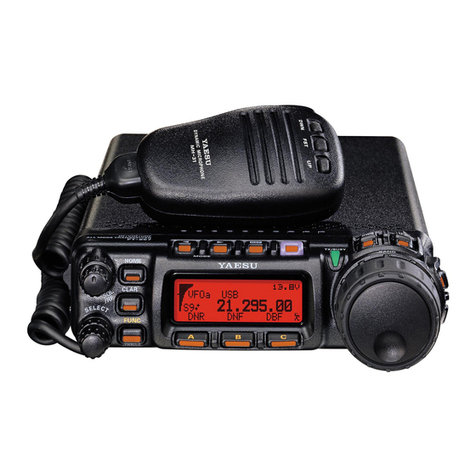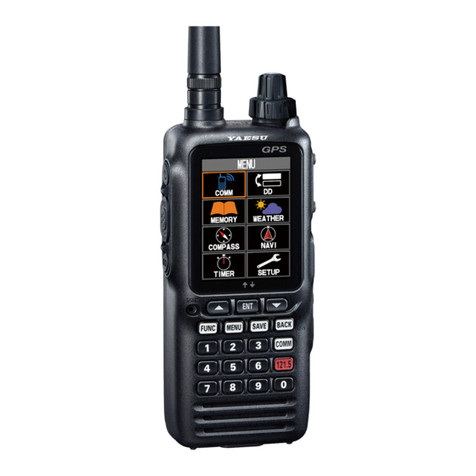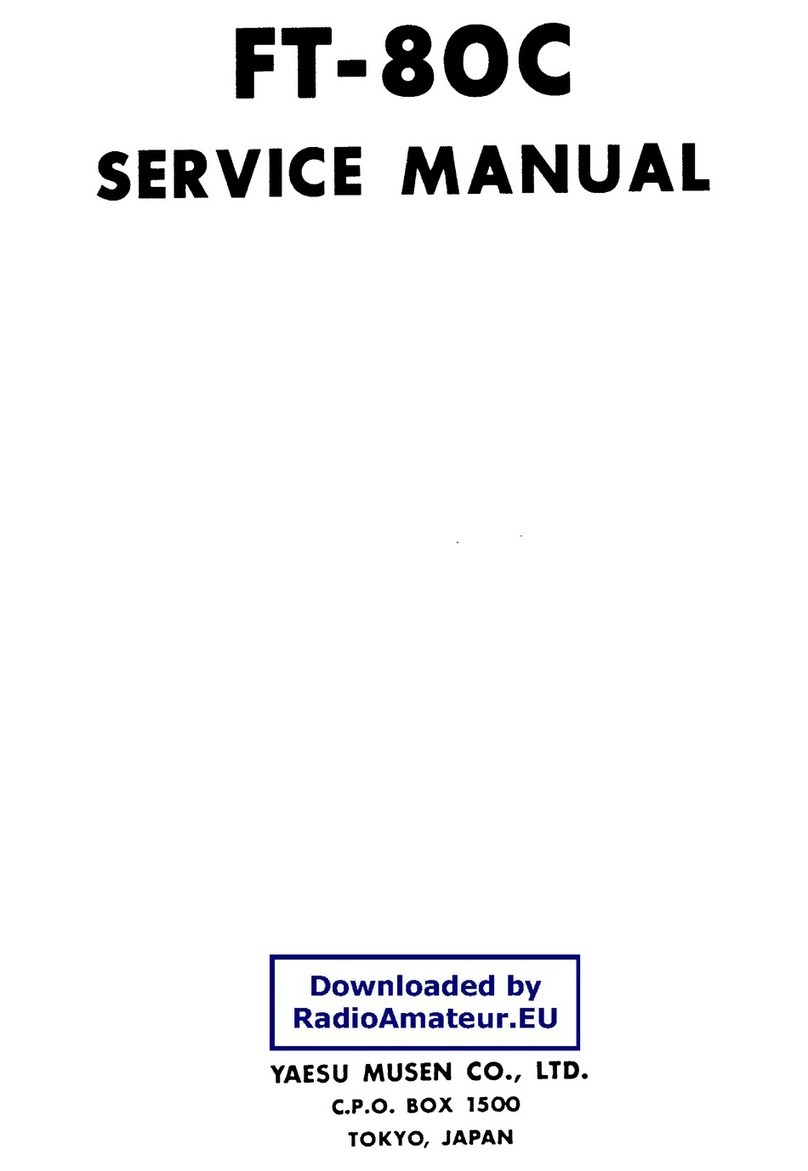6
Before Use
Introduction ................................................................. 2
Features of this transceiver.................................... 2
Important precautions for mobile transceiver
operation ................................................................ 3
About registered trademarks and copyrights ......... 4
How to read this manual ........................................ 5
................................................................. 9
Safety Precautions (make sure to read these) ........... 9
Checking the supplied items..................................... 13
Name and function of each component .................... 14
Front panel ........................................................... 14
Front ................................................................ 14
Rear ................................................................ 16
Main body ............................................................ 16
Front ................................................................ 16
Rear ................................................................ 17
Microphone (MH-48A6JA) ................................... 18
Screen display ..................................................... 19
Input characters ................................................... 20
Switching the character type ........................... 20
Deleting the input characters .......................... 20
Moving the cursor to the left ............................ 20
Moving the cursor to the right .......................... 20
Deleting the most recently input character ...... 20
Completing input ............................................. 20
.................................. 21
Installing the transceiver ........................................... 21
Precautions on installation ................................... 21
Installation location when used in a mobile unit ... 22
About the antenna................................................ 23
Installing the antenna ...................................... 23
Installing the main body ....................................... 25
Installing the front panel ....................................... 26
Connecting the transceiver ....................................... 27
Connecting the front panel to the main body ....... 27
Connecting the microphone ................................. 27
Connecting the antenna ....................................... 27
Connecting the power supply ................................... 28
Connecting the car battery .............................. 28
Connecting the external power supply
equipment ....................................................... 30
Setting Up the micro-SD memory card ..................... 31
micro-SD memory cards that can be used........... 31
Things to note when using micro-SD
memory cards ....... 31
Inserting a micro-SD memory card ...................... 32
Removing the micro-SD memory card ................. 32
Initializing micro-SD memory cards ..................... 33
....................................................
Receiving .................................................................. 34
Turning the power on ........................................... 34
Switching the power off ........................................ 34
Inputting the call sign ........................................... 34
Toggling the operating band ................................ 35
Adjusting the volume level ................................... 35
Adjusting the squelch level .................................. 36
Tuning in to the frequency ................................... 37
Changing the frequency steps ............................. 37
Switching the operation mode.............................. 38
Selecting communication mode ........................... 39
Switching the modulation mode ........................... 40
Communicating......................................................... 41
Transmitting ......................................................... 41
Adjusting the transmit power ........................... 42
Adjusting the microphone sensitivity ............... 42
Communicating in FM mode ................................ 43
Communicating using the repeater ...................... 43
Tone Calling (1750 Hz) .................................... 43
Changing the 100.0 Hz CTCSS tone squelch
... 44
Other settings ........................................................... 45
Changing the beep volume .................................. 45
Locking the DIAL and keys .................................. 46
Adjusting the date and time ................................. 46
Adjusting the display brightness .......................... 48
Restoring defaults (All Reset) .............................. 49
.................................................. 51
Registering to the memory channel ..................... 51
Recalling memories ............................................. 52
Recalling the home channel................................. 53
Changing the frequency of the home
channel ............................................................ 54
Clearing memories ............................................... 55
Naming a memory channel .................................. 56
Displaying the memory tag .............................. 58
Split memory ........................................................ 59
Receiving Weather Broadcast Channels
(USA version only) ............................................... 60
Assigning the “WX” function to a
programmable key on the microphone ............ 60
Recalling the weather channels ...................... 60
Listening the weather alert .............................. 61
................................................................. 62
Searching for signals ................................................ 62
VFO scan ............................................................. 62
Selecting the receiver operation performed
after scanning stops ........................................ 63
Memory scan ....................................................... 64
Selecting the scanning method ....................... 65
Specifying memory channels .......................... 66
Scanning only the specified memory
channels .......................................................... 67
Setting memories to skip ................................. 67
Scanning the programmable memories (PMS) .... 68
Registering to the programmable memory
channels .......................................................... 68
Scanning the programmable memory
channels .......................................................... 69
Monitoring the home channel ................................... 70
Using the dual receive function ....................... 70
Setting the dual receive restart setting ............ 71
Setting the channel signal reception time
when using the dual reception function ........... 71
........................................ 72
What is GPS? ........................................................... 72
Activating the GPS function ...................................... 72
Checking the satellite acquisition status .............. 73
